HG3 Close Field Monitoring System
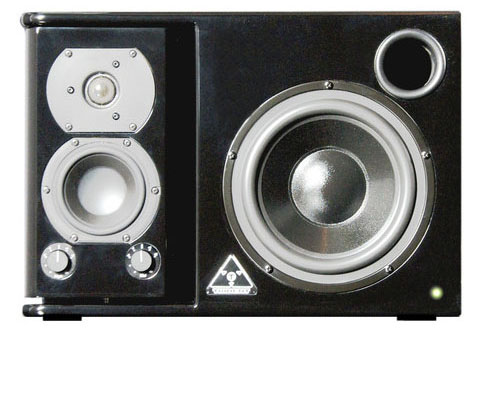
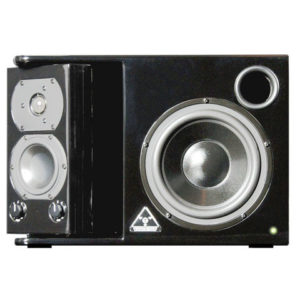
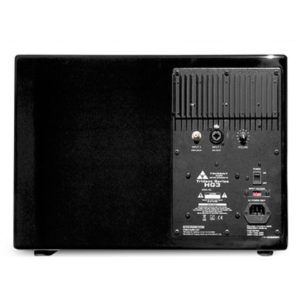
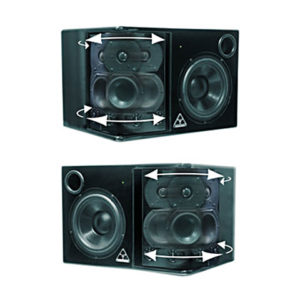
Bass Response
The use of a port can extend the usable response of a low frequency speaker, but below resonance, the speaker becomes uncontrolled and will flap wildly in conventional ported systems. The Trident HG3 system eliminated this problem by using a controlled electronic roll-off below the speaker’s usable response. Separate subwoofers create additional problems by introducing phase cancellations at crossover, and exciting unwanted room nodes – eliminating the advantages of near field monitoring. Separate sub-woofer placement is a hit or miss proposition, guaranteed to cause problems in poorly treated rooms Through the use of a dual voice coil sub-woofer, in each speaker box, and optimal tuning, the usable response is extended smoothly to almost 30 Hz in a very small enclosure. Each sub-woofer has its own 100 Watt dual MOS amplifier to insure clean, distortion free power. Further, the port is located outside the path of all active speaker components to insure freedom from Doppler distortion at very low frequencies.
 Below 90 Hz, the HG3 bass response is essentially omni-directional. From 90 Hz up to the crossover point of 320 Hz, the bass response narrows to about 180 degrees. Above 320 Hz, any large diameter speaker’s dispersion narrows and the frequency response becomes ragged and uneven. Not a good thing.
Below 90 Hz, the HG3 bass response is essentially omni-directional. From 90 Hz up to the crossover point of 320 Hz, the bass response narrows to about 180 degrees. Above 320 Hz, any large diameter speaker’s dispersion narrows and the frequency response becomes ragged and uneven. Not a good thing.
Mid-range Response
The most critical range in any monitor system is the mid-range; that’s where the voice resides, the bulk of the guitar’s sound, and the overall detail of the music. It’s strange that some manufacturers would split the vocal range in the middle, and assign part of the vocal to the woofer, and the other part of the critical vocal range to another speaker. It just doesn’t make sense. Part of the vocal (in a typical two-way system) is being modulated by pumping bass, and the other part is bouncing off the ends of the cabinet, creating edge diffractions. The result is smeared mid-range, bad stereo imaging, and poor off axis response. The Trident HG3 uses crossover points set at 320 Hz and 3,500 Hz to eliminate those problems. The unique cabinet design takes care of the rest.
The Cylinder
The mid-range speaker is mounted in an isolated, 6″ diameter, damped, cylinder, to eliminate edge diffractions and woofer/cabinet resonance interactions. The cylinder also houses the 1-1/8″ silk dome tweeter, its crossover, plus the mid and tweeter level controls. A separate 80 Watt amplifier drives the cylinder mid and treble components.
The unique cylinder design lets the listener position the critical directional components exactly where needed, regardless of the distance between cabinets, without the need to move the main cabinet into a precarious balance position. The electrical connections are made through the ends of the cylinder; the cylinder can be turned in any direction, continuously, without damage. In fact, rotating the cylinder simply cleans the contacts.
The Amplifier
The Trident HG3 power amplifier section is made up of three identical 100 Watt MOS amplifier modules, noted for their low distortion, wide band width, and low noise levels. A unique “muting circuit” prevents thumps at turn on/off. Two modules are used to power the woofer section, and a separate module is used for the mids and highs.
Overall Distortion is typically around 0.05% and the noise level is typically below -104 dB. A unique warning LED is built into the front panel of the Trident HG3 that changes from green to red as you begin to approach audible distortion levels (above 1%). Three sets of inputs allow for both Balanced (XLR and TRS) and unbalanced (TS and RCA) connections. The dual-color LED on the front of the cabinet shows both power on (Green) and distortion (Red).
Read Our HG3 Reviews
Click here to read Recording Magazine’s Review
by Lorenz Rychner
Click here to read Sound on Sound’s Review
by Hugh Robjohns
The unique cabinet configuration of the Trident HG3 Close Field Monitoring System is designed to reduce or eliminate many issues found in today’s monitor systems. Some of these include:
- Limited Dispersion and Bandwidth
- Doppler Distortion
- Phase Distortion
- Inter-Modulation Distortion
- Cabinet Resonances
- Edge Diffraction
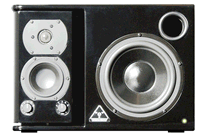
…and other problems associated with traditional monitor designs.
